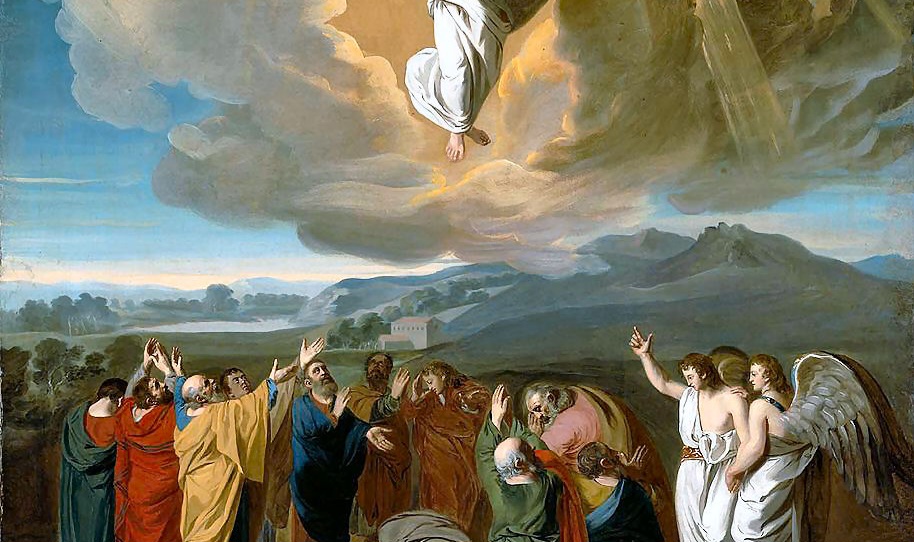When we look at the trend in positions of authority and governance, even in countries where there is not the cultural habit of special deference to elders, we see people holding on to these roles well into their seventies or early eighties. In some sectors, especially the political context, we see figures exercising whatever means they have at their disposal to stay in power and control long after their original mandate has ended. When we put the most positive spin of interpretation on this, attributing to them positive motives, perhaps these people truly believe that they are the most qualified to serve their constituents. And in some cases, this might be true. However, reality often reveals that this is not the case, and that once a person has tasted the status, privileges, and access that come with executive roles, they become addicted to them, losing clarity about what motivated them to lead in the first place.

The Ascension by John Singleton Copley (1775)
The problem with this dynamic is not only that people overstay their role well beyond their best service, but that it also inhibits the development of the next generation from taking their place.
With Jesus, from nearly the beginning of his public ministry, things were different. Over the course of just three years or so, Jesus did three things that all leaders should imitate in order to foster succession, not for roles of power or privilege, but for the sustained service of mission.
First, as we know, Jesus spotted people’s potential and regularly took opportunities to coach their gifts, stretch their limits, and mentor and model the characteristics, virtues, and behaviors of a true shepherd leader. We recall how fairly early on in his public ministry, he identified Peter as someone who, imperfect and failable as he was, had what it would take to follow in his footsteps. We know how Jesus set him apart by giving him responsibility, held him to a higher standard of expectation, and when necessary, corrected him- even publicly, when Peter was not acting in line with his call to service. With a measure of support and challenge proportioned to Peter’s need to learn, grow, and mature, Jesus coached him along his Way.
On this first point of spotting and fostering potential, Jesus did not do this for Peter alone. He knew that Peter would need a team to work with him, and so he paid special attention to James and John, the two “sons of thunder.” He initiated and bound them together, despite their rivalries with Peter, and through very powerful shared experiences, helped them come to a shared sense of closeness with him, and a deeper understanding of his mission. We might surmise that he did this in his own way with Mary Magdalene, who seemed to have a deeper insight into Jesus’ promise of rising after the third day, and later with Saul, whom he called to conversion and apostleship. Spotting and fostering talent: step #1.
Second, we know that Jesus did not grasp at the powers of divinity, but that even after his resurrection, when he could undoubtedly have continued his miraculous work for the Kingdom of God, he chose to make space for succession. After a period of time consoling his dear friends, reconciling, affirming, and encouraging them, the Risen Jesus made it clear that he would leave them to take up his mission themselves.
No doubt they protested at the idea of him being taken from them again, not only because they loved him and wanted him to remain with them forever, but because they couldn’t even imagine picking up this mission without him.
But it was only by making space for them through his Ascension that the Risen Christ could enable them to step forward, take up his mantle, and carry on in the proclamation of the Good News. Leaving them was in fact, an act of love, and the essential sacrifice that a good leader makes in order to draw the next generation into their full vocations. Making space by leaving when the time is right and ripe: step #2.
Third, and finally, Jesus does not leave them entirely alone. Through the gift of the Holy Spirit, he enables the disciples to recall everything he has taught and modeled for them along the way. How? While the action of the Holy Spirit is a mystery, we know from our own experience that when a person dies, or leaves an organization, there is often a sense that they are still present in a distinct and palpable way. We might call this their legacy, a sense of their ethos, and certainly their inspiration. While we many of us have experienced such a lasting sense of presence when a special leader has moved on, Jesus made a promise to his friends that his Father would send them the Advocate, the Holy Spirit, not only to remind them of the past, but also to instruct them with everything they would need to carry on into the future. He supplied them with not only peace and hope for the future, but the confidence that they could learn what they needed in order to take the mission forward.
What more could the disciples have needed than to have the confidence that they could learn their way through whatever uncertainty and challenges they faced. Leave a palpable ethos and good example, instilling confidence in successors that they can also learn their way forward, to discern paths for the future of the mission: step #3.
As leaders, how are we positioning others to take our place? What active steps are we taking to promote the capabilities and gifts of others for roles of service and responsibility? What self-abnegation do we have to exercise, even when we still have all the energy and competence we need, to make more space for others to stretch into our roles? If we are already attending to these questions, then we are aware that leaving an enabling and encouraging legacy is its own fulfillment, even as we also accept the pain of our own eventual disappearance.
With you on the way,




